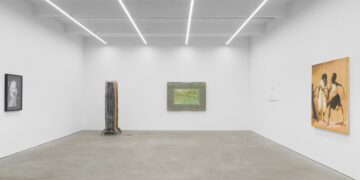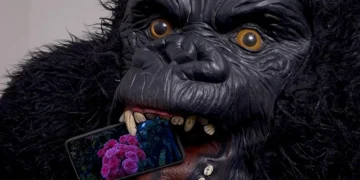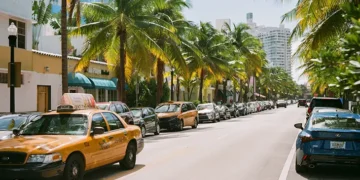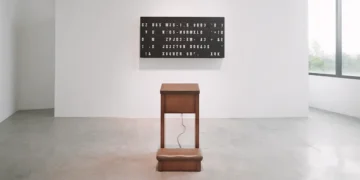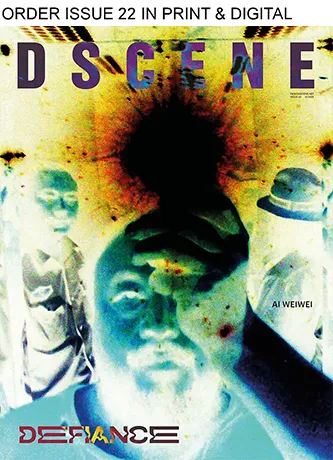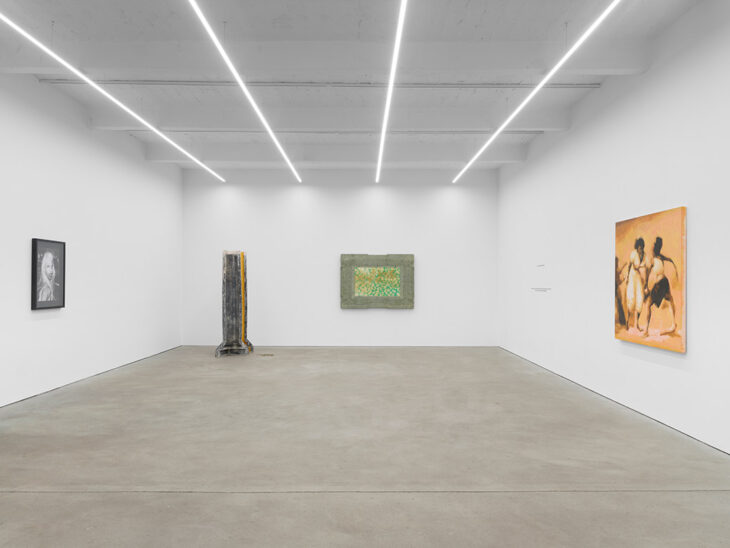
Nexus exhibition at Kraupa-Tuskany Zeidler in Berlin brings together the work of four artists – Davide Allieri, Allen-Golder Carpenter, Taína Cruz, and Theodoulos Polyviou – who explore the intersection of self, identity, space, and technology through distinctive mediums and conceptual frameworks. The exhibition, running from September 11 to October 26, 2024, examines how these interconnected themes are shaped by both physical and virtual environments, crafting an alternative narrative where fiction and reality blend.
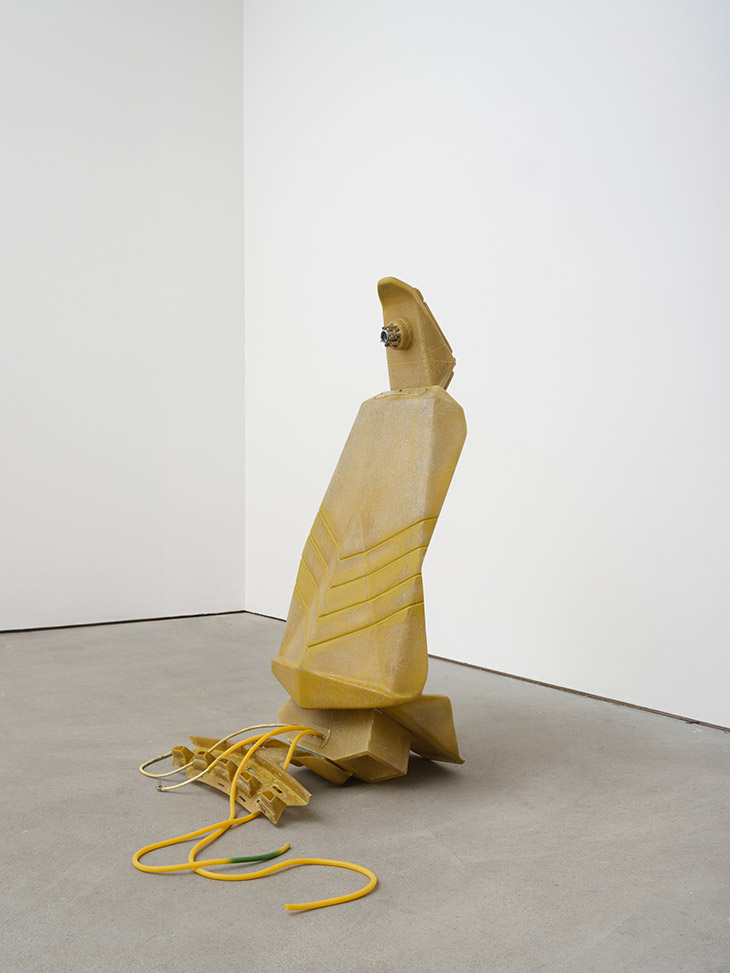
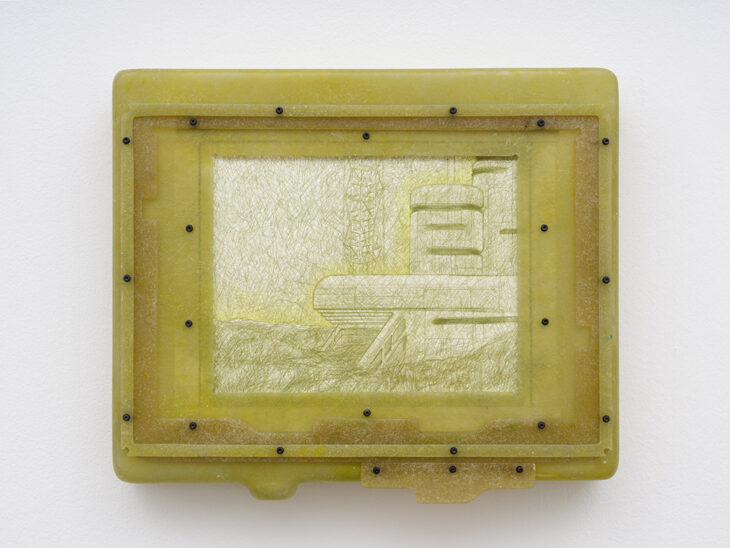
Davide Allieri’s contribution stands out for its futuristic and dystopian architectural references. His fiberglass sculptures evoke structures of shelter that simultaneously feel abandoned, mirroring the obsolescence of certain societal constructs. These works draw heavily from the speculative worlds often found in science fiction, positioning architecture not only as a means of protection but also as a relic of environmental degradation and societal collapse. Allieri’s pieces seem to engage with a future archaeology, suggesting that these constructs could one day be discovered as remnants of a lost civilization.
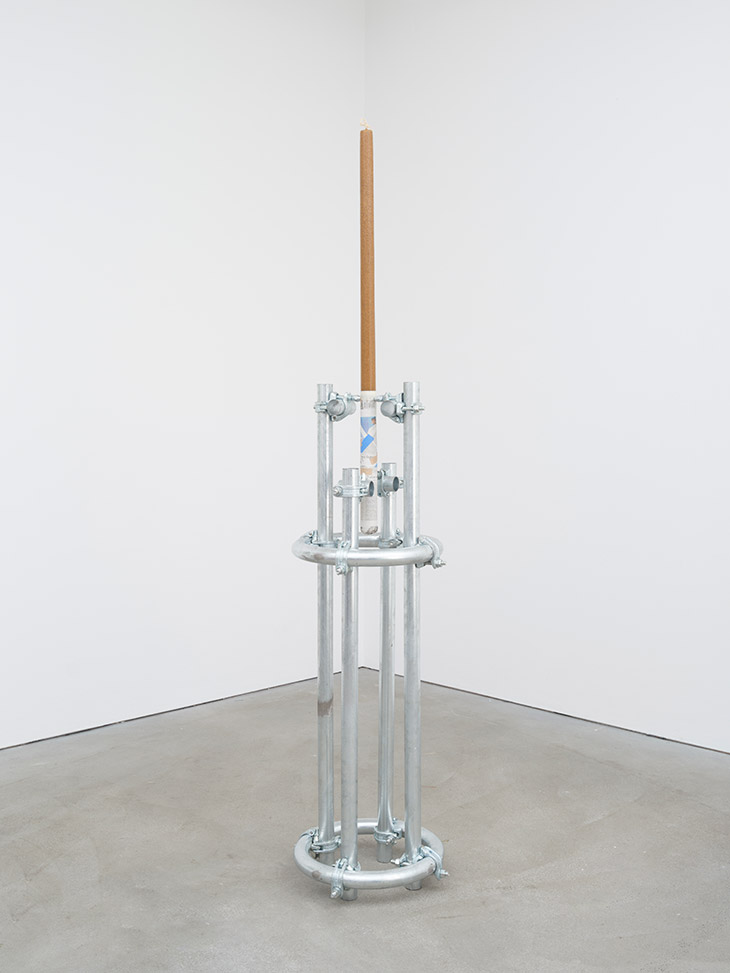

Theodoulos Polyviou’s work explores the intersection of architecture and post-colonial identity, specifically within the context of Cyprus. His ongoing project, “Transmundane Economies,” critiques the Church’s influence on Cypriot identity and its impact on the nation’s post-colonial heritage. Polyviou’s sculptures and installations repurpose architectural elements tied to the Archbishop’s Palace in Cyprus, using them to reflect on nationalism and the right to self-determination. The tension between visible and hidden histories emerges in Polyviou’s work, raising questions about how architecture can simultaneously unify and marginalize.
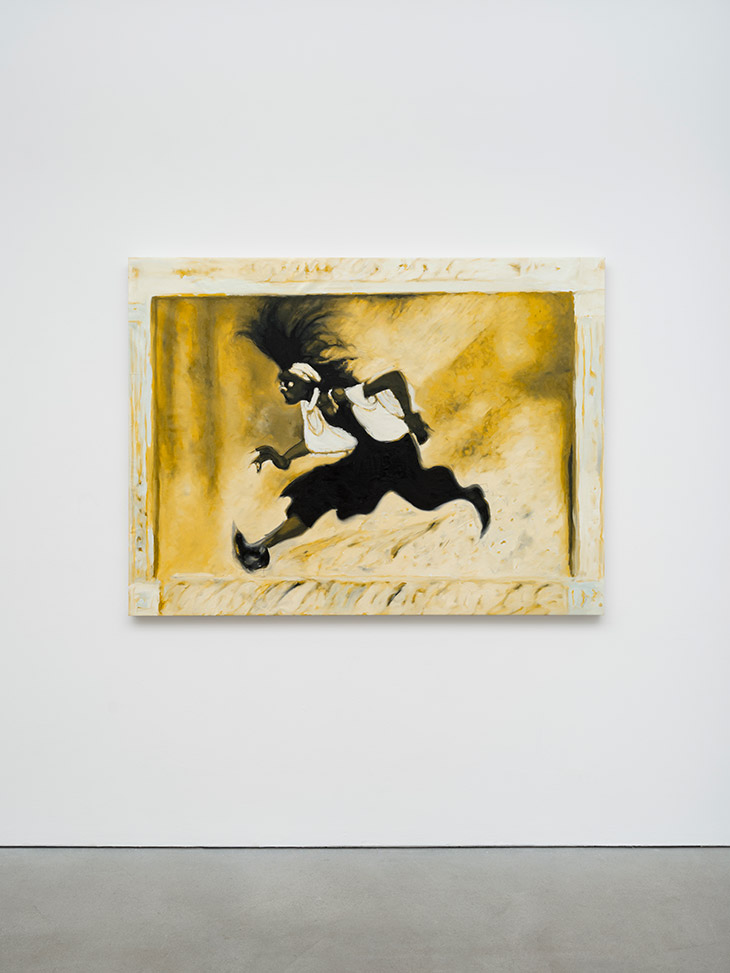
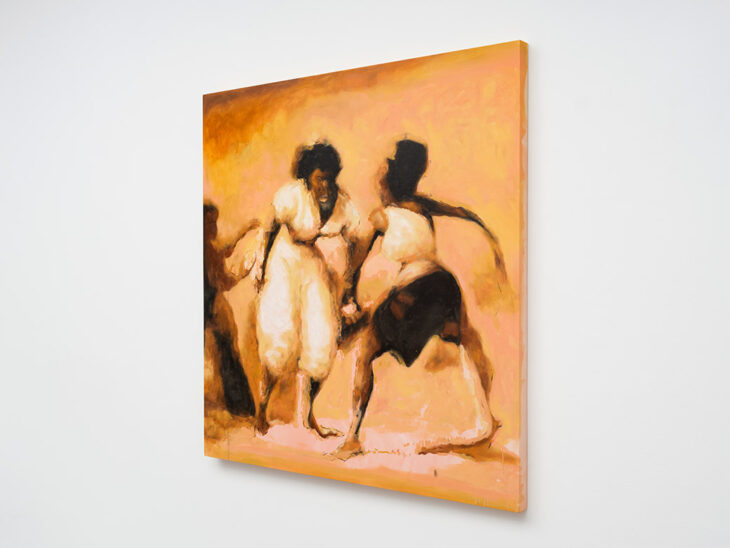
In contrast, Taína Cruz’s paintings take a more introspective approach, examining the tension between presence and absence through her exploration of light and shadow. Cruz’s figures float in negative space, suspended between defined and undefined environments that represent the porous boundaries of identity in a digital age. Her pieces reflect the fleeting nature of both physical and emotional spaces, questioning how these ephemeral experiences shape human interaction and self-perception.
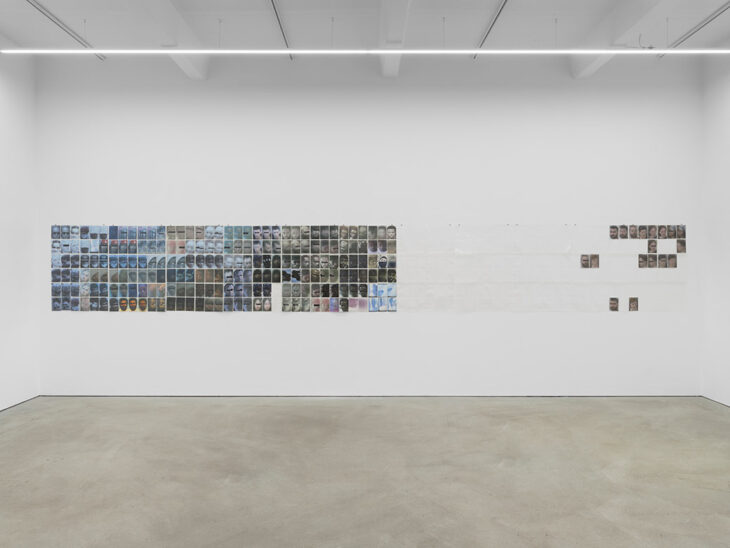
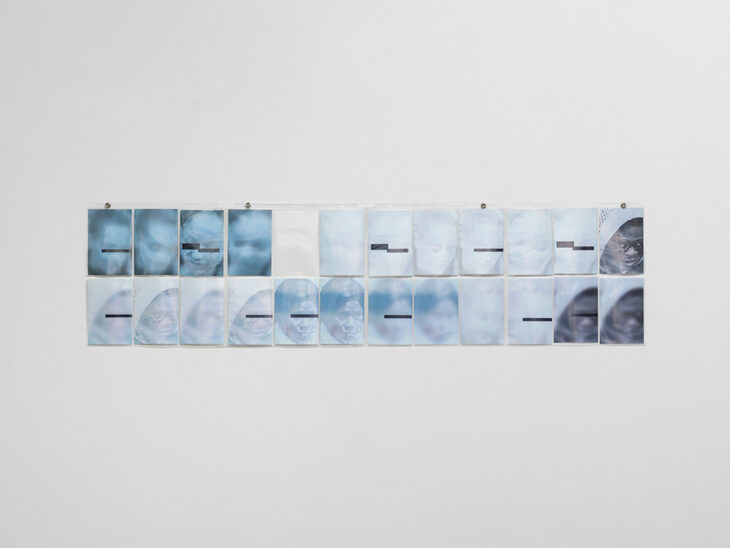
Allen-Golder Carpenter’s multimedia installation challenges societal norms through the lens of surveillance culture. Their work, “Viewer vs. Subject: Projection + Boundaries,” plays with the concept of public shaming by presenting images of alleged shoplifters captured on CCTV and placing the gallery visitor in the position of both observer and observed. Carpenter’s installation forces viewers to confront their own biases, asking how societal control manifests through the criminalization of individuals based on race and class. By blending personal identity with surveillance culture, Carpenter critiques how modern technologies commodify the individual, stripping away autonomy over one’s image.


Curated by Sigrid Hermann, Nexus offers a compelling investigation into the fluidity of identity, space, and technology, making connections between architecture, politics, and the digital world. Each artist in the exhibition presents work that moves beyond conventional boundaries, inviting visitors to reconsider the relationship between internal and external forces that shape the self. The dialogue between these diverse practices creates a complex and layered narrative that speaks to the challenges of modern existence.

